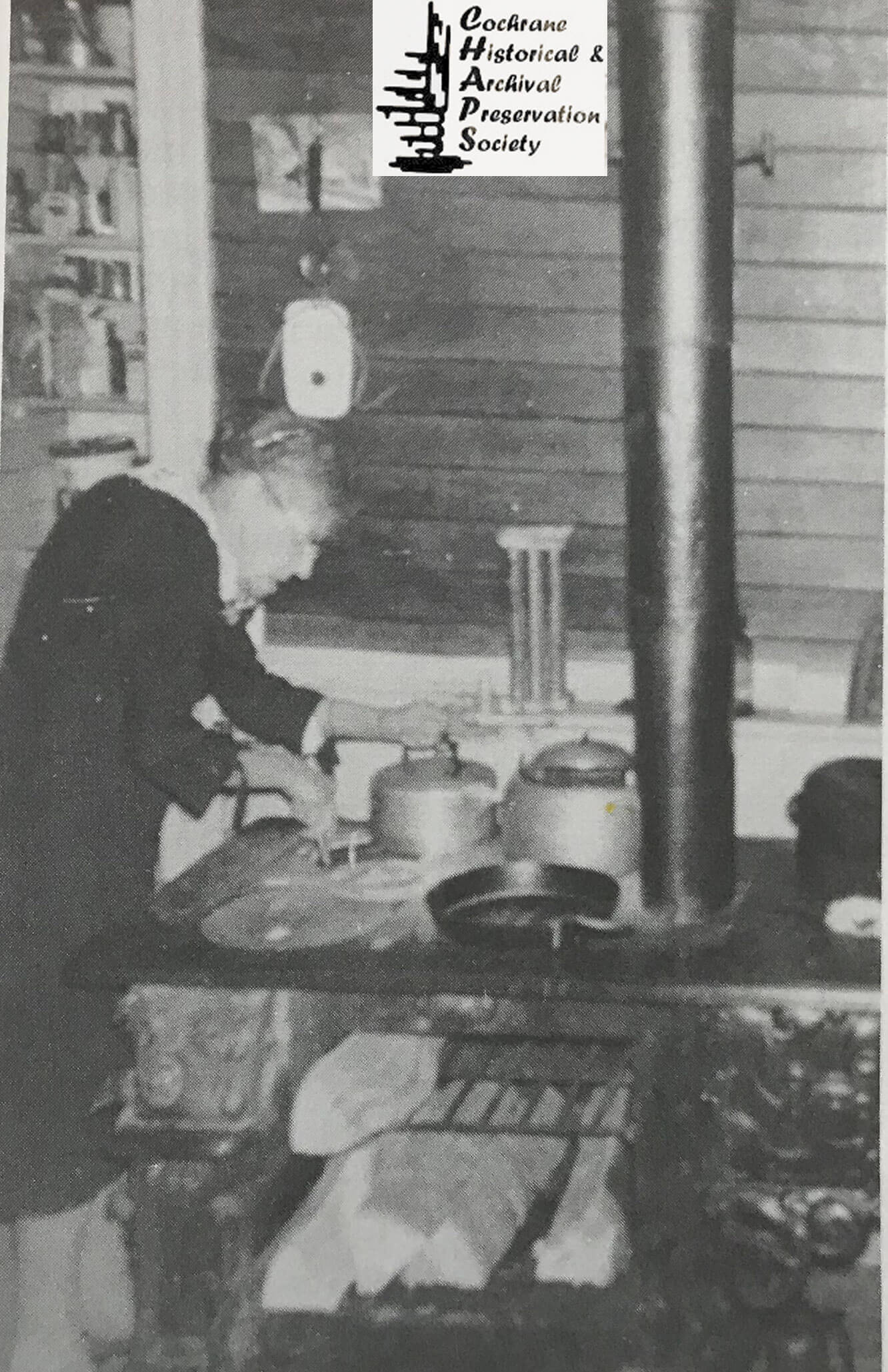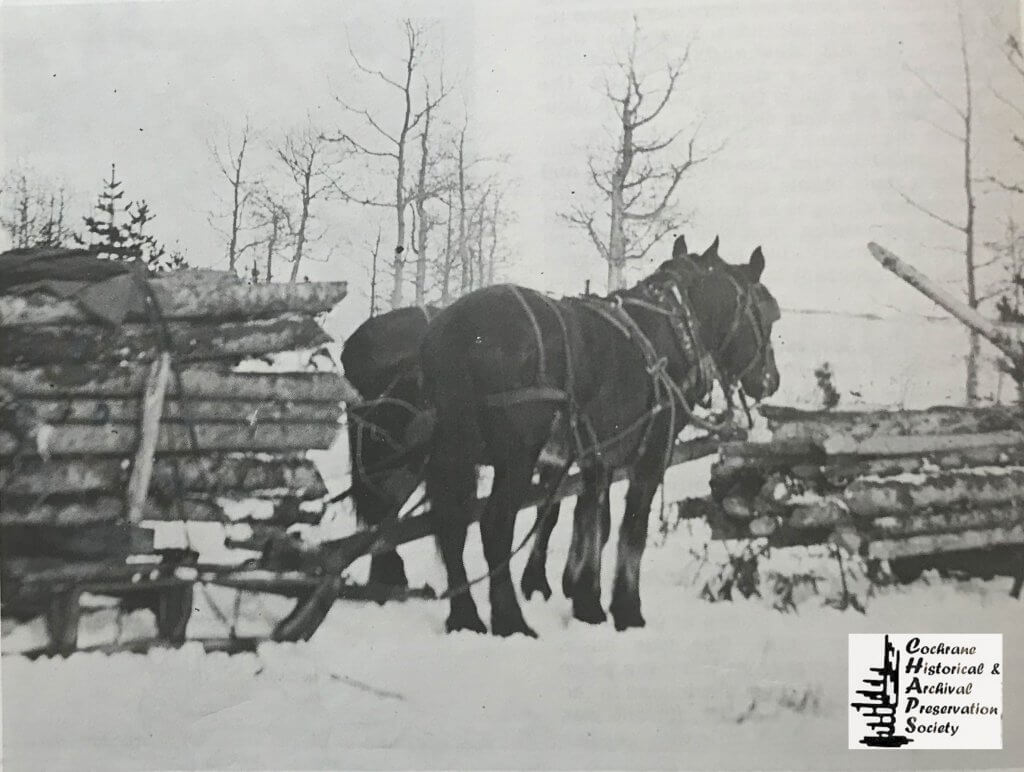Our old cookstove was called “Kitchen Queen.” What a suitable name for the appliance that indeed reigned over our house!
My parents bought their Queen at one of Joe Taylor’s first auction sales. She was huge, measuring about eight feet from warming ledge to the reservoir. It must have been a fair load in the wagon coming home from the sale, for she was solidly built, and I can’t think how they got her into the house.
A temperamental lady, she had to be continually fed with firewood. Not too damp, or would smoke sulkily; not too dry, lest she flares up and threatens to set fire to accumulated soot in the chimney. She disdained green poplar wood, requiring that it be dried in her oven before it was offered to her for consumption
Unlike the Quebec heater in the sitting room, whose warm smile gleamed through the mica windows in its door, day and night Queen refused to work over refused to work overtime and loathed a lump of coal. No amount of persuasion with the bellows would coax her to burn the stuff. She refused to burn even paper until her ashes were emptied, and once a week her flues had to be carefully scraped clean of soot. Not satisfied with being clean, the Queen would threaten to rust if she were not polished to a shiny black with stove blacking and plenty of elbow grease.
My mother was the Queen’s Lady in Waiting. She learned how to coax the Queen to maintain the right oven temperature; the correct size, shape and type of firewood was her only thermostat. Mother persuaded her to simmer a pot of beans, or keep a meal hot in the warming closet, or warm a pan of curds for cottage cheese on a little shelf between the top of the stove and the warming closet. A pan of bread dough, or cold toes, were gently warmed on the Queen’s ledge above the ash box. With Mother’s patient handling she turned out the most delicious food, from delicate eclairs to sturdy stews.
I often used to think that the Queen liked to torment me on hot summer days. She seemed quite willing to keep the irons almost red hot, as long as I stayed alongside her to also keep red hot while I did the ironing.
Our Queen’s reservoir was versatile; if kept replenished, it could provide boiling water on the baking day or ice cubes on a winter morning. Once it sprung a leak; that was a major catastrophe and the Queen seemed to remind us of her importance in our lives every time we heated water in a wash boiler on her lids.
Yes, our Kitchen Queen was important.” pungent aroma of a wood stove and the delicious flavour it imparted to food cooked on its top or the oven, are part of my cherished memory of the past.



